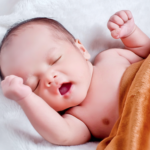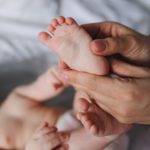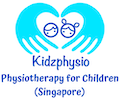Quick Check for Newborn Babies for Parents
(Neck, Hips & Feet)



Have you just had a new born baby , and want to make sure that your baby's neck, hips and feet are developing normally?
The conditions we are trying to rule out in your baby in this quick check are:
- Neck: Torticollis / Wry neck / Twisted neck
- Hip: Hip Dysplasia and
- Feet: CTEV / Club Foot
It is useful to pick up these muscles and joints conditions as soon as possible, as early treatment of these issues result in better treatment outcomes.
Please watch this short 4-minute video to see how to do a quick check for your baby's neck, hips and feet.
Transcript for Video (Quick check for Newborns for Parents – Neck, Hips & Feet)
“Hi, I’m Janell. I’m a paediatric physiotherapist and today I am going to do a quick video for parents who have just had a baby, to show you how you can do a quick check on your baby’s neck, hips and feet.
Let me face this down, so you can take a look at my doll.
To check your baby’s head and neck, the first thing you can do is to lie your baby on his or her back, and take a look at your baby from the top. What you should see is that the head should be in line with the trunk, and the head should not be tilted to any one side. I will let this doll face the camera, and imagine that this baby is lying down. What you should see is that the head should be in line with the trunk, and the head should not be tilted to any one side.
The other check to do for the neck, would be to see if your baby is able to turn his or her head very comfortably to both sides. You can use a toy to get your baby to turn the head all the way to one side. And then see if your baby turns equally well to the opposite side. You can also use your face and your voice to get your baby to turn to the side. What you want to see is that your baby is able to turn the head comfortably to both sides equally well. That would be the check for the head and neck.
(*NB: You do not need to use your hands to turn your baby’s head. Your baby should be able to turn the head on his/her own. I needed to turn the doll’s head, so it would be clear what I meant when I said head turning to the side.)
I am going to change the doll for the check for the hips, because this doll has more flexible legs. To do the check for the hips, you bend the hips and knees and see if the knees can reach your baby’s tummy. At this age, the knees should reach the tummy easily. What you do next is to open up the legs, and you should see that it is really easy for the legs to touch the ground on both sides. Do this a few times and what you are feeling for is the smooth movement of both hips, and you should not feel or hear any clicky sounds. The other thing that may prompt you that there is a problem with the hips would be difficulty in opening up the legs during a diaper change.
Let’s switch back to the other doll for the quick check of the feet. What you are looking for the feet when you are looking at the sole of the feet, is to make sure that the outside borders of both feet are straight. If you look at my finger, you can see that the outside border of the foot is in line with my finger – that’s good. What we don’t want is for the foot to be curved inwards. The other thing to look out for is to make sure that the foot is not turned inwards this way as well.
That’s a really quick check on your baby’s neck, hips and feet. If you have any questions you want to ask, or you would like a further assessment of your baby, please feel free to reach out to me. My contact details are down on this page.
Thank you! Bye!”
Please do reach out to us if you have any concerns about your baby's head shape or posture, your baby's clicky or stiff hips, or poor feet positioning.
Let's get in touch
